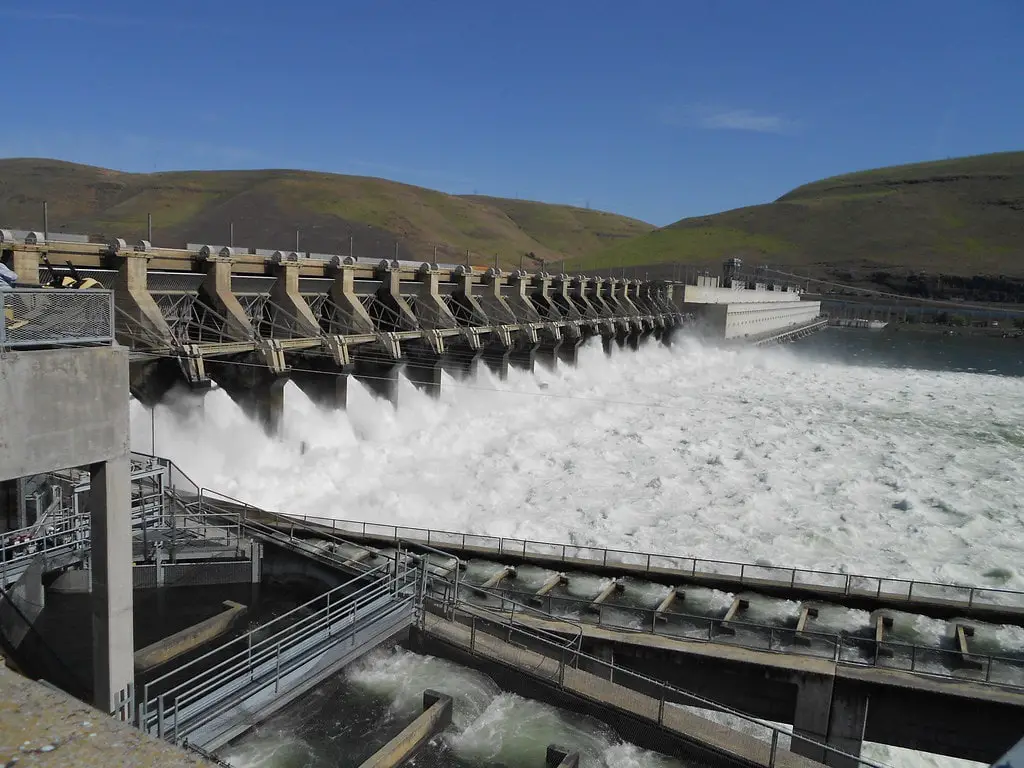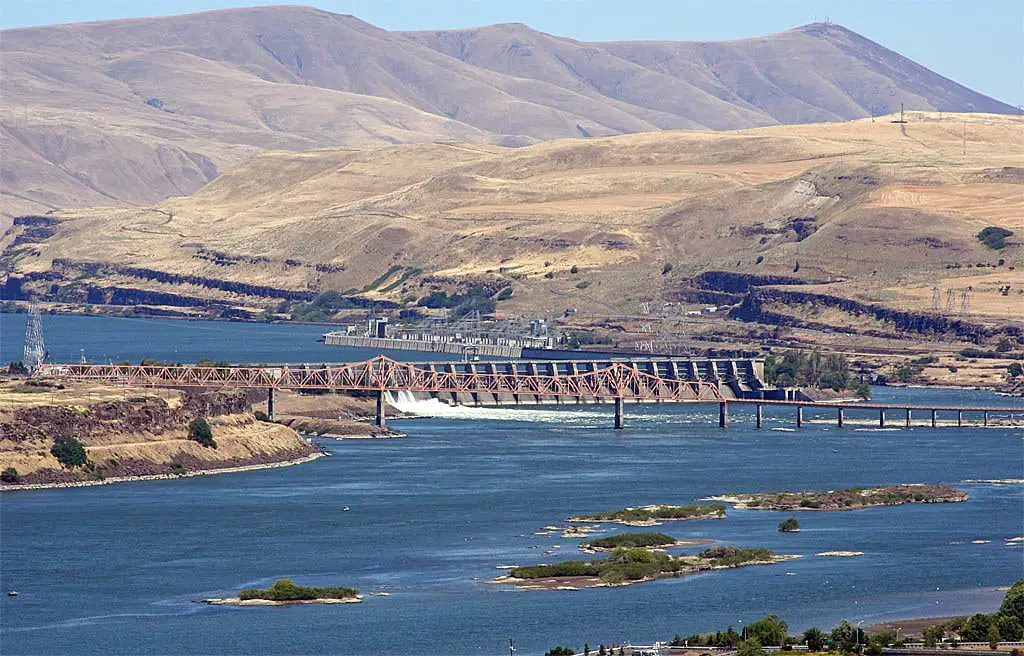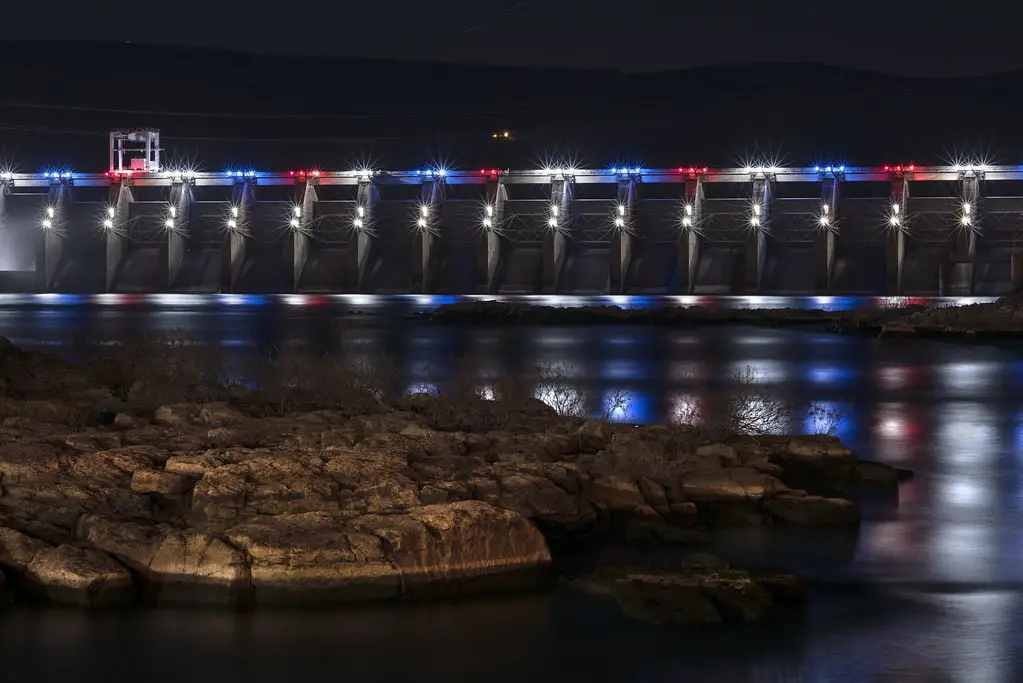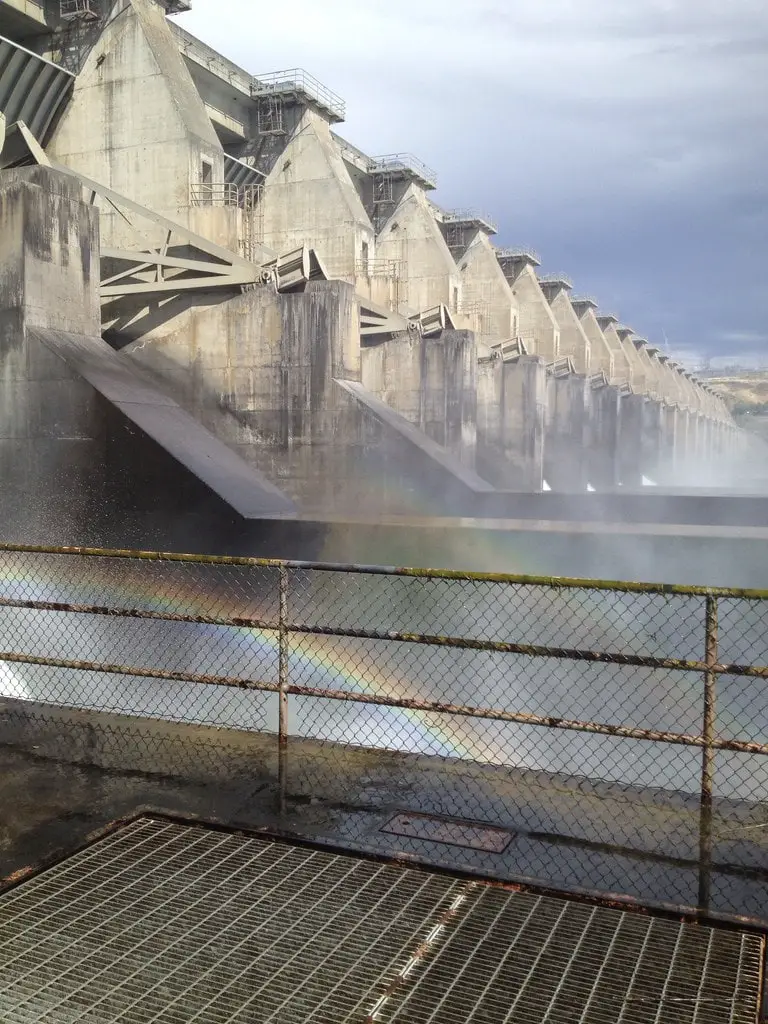Delving into the Historical Backdrop
The Dalles Dam, an imposing structure that spans the Columbia River, is a testament to the power of human innovation and the relentless march of progress.
Located just two miles east of The Dalles, Oregon, this concrete-gravity run-of-the-river dam is a vital link between Wasco County, Oregon, and Klickitat County, Washington.
The dam's construction, initiated by the U.S. Army Corps of Engineers in 1952 and completed in 1957, marked a significant turning point in the region's history. The dam's creation was a monumental engineering feat, but it also sparked controversy and brought about substantial cultural and environmental changes.
One of the most profound impacts of the dam's construction was the submersion of Celilo Falls. This site was not just a geographical feature but a significant economic and cultural hub for Native Americans in the region.
Recognized as the most ancient settlement in North America with continuous habitation, the disappearance of Celilo Falls had a profound and lasting impact on the indigenous communities in the area.
On March 10, 1957, hundreds of observers watched in silent disbelief as the once-thundering falls were silenced, the fishing platforms submerged, and the village of Celilo consumed by the rising waters.
The dam's construction also threatened ancient petroglyphs in the area, with around 40 panels removed before inundation and later installed in Columbia Hills State Park, preserving a small part of the rich cultural heritage that was lost.
The Dalles Dam: A Detailed Look at Its Specifications and Operations
The Dalles Dam is a marvel of engineering. Standing at a height of 200 feet and stretching 8,835 feet, it's an imposing sight that commands respect. The dam's reservoir, named Lake Celilo, extends 24 miles up the river channel to the foot of John Day Dam.
The dam's operations are multifaceted, serving a variety of purposes that are crucial to the region. It is pivotal in power generation, irrigation, flood mitigation, and navigation.
As a crucial part of a comprehensive network of Columbia and Snake Rivers dams, it significantly strengthens the region's power generation and manages its water resources.

The dam's power generation capabilities are awe-inspiring. With 22 turbines and an installed capacity of 1,878.3 MW, it ranks among the ten largest hydro power-producing dams in the United States.
The American Society of Civil Engineers has recognized its significance, designating The Dalles Dam as a National Historic Civil Engineering Landmark.
The Environmental and Social Consequences: A Closer Examination
The dam's construction had far-reaching environmental and social consequences. Before the dam's construction, Celilo Falls was a vital hub for local Native American trading and fishing.

The dam's physical presence made it difficult for fish, particularly salmon, to navigate the river and reach their spawning grounds. Despite installing fish ladders, salmon populations have struggled, impacting the local ecosystem and the livelihoods of those who depend on it.
The dam's construction also disrupted the traditional rights of local Native American tribes to fish, rights that were protected by a government treaty. However, the onset of the Cold War and the legacy of the Bonneville Dam, completed in 1938, spurred the U.S. Army Corps of Engineers to develop another hydropower production facility on the Columbia River.
The Dalles Dam received its authorization under the 1950 Flood Control Act. The federal government navigated the treaty restrictions by offering the tribes a financial settlement.

Recent Developments and Future Prospects: Looking Ahead
The Dalles Dam continues to evolve, with recent developments and prospects shaping its role in the region. Since 2016, the U.S. Army Corps of Engineers has been working on The Dalles Lock & Dam Tribal Housing Village Development Plan.
This plan aims to identify a suitable site and build a village for the tribal members who have historically depended on Celilo Falls for their fishing needs. Although the completion of the Village Development Plan was initially projected for the fall of 2020, it remains unfinished as of June 2023.
In 2007, a sonar survey of the riverbed of Celilo Falls was conducted to determine whether the dam's construction had destroyed the former site of the falls.

The sonar survey revealed that the geological formations on the riverbed were consistent with those seen in photographs of Celilo Falls before the dam's construction. This discovery suggests that Celilo Falls could potentially return if The Dalles Dam were to be removed.
